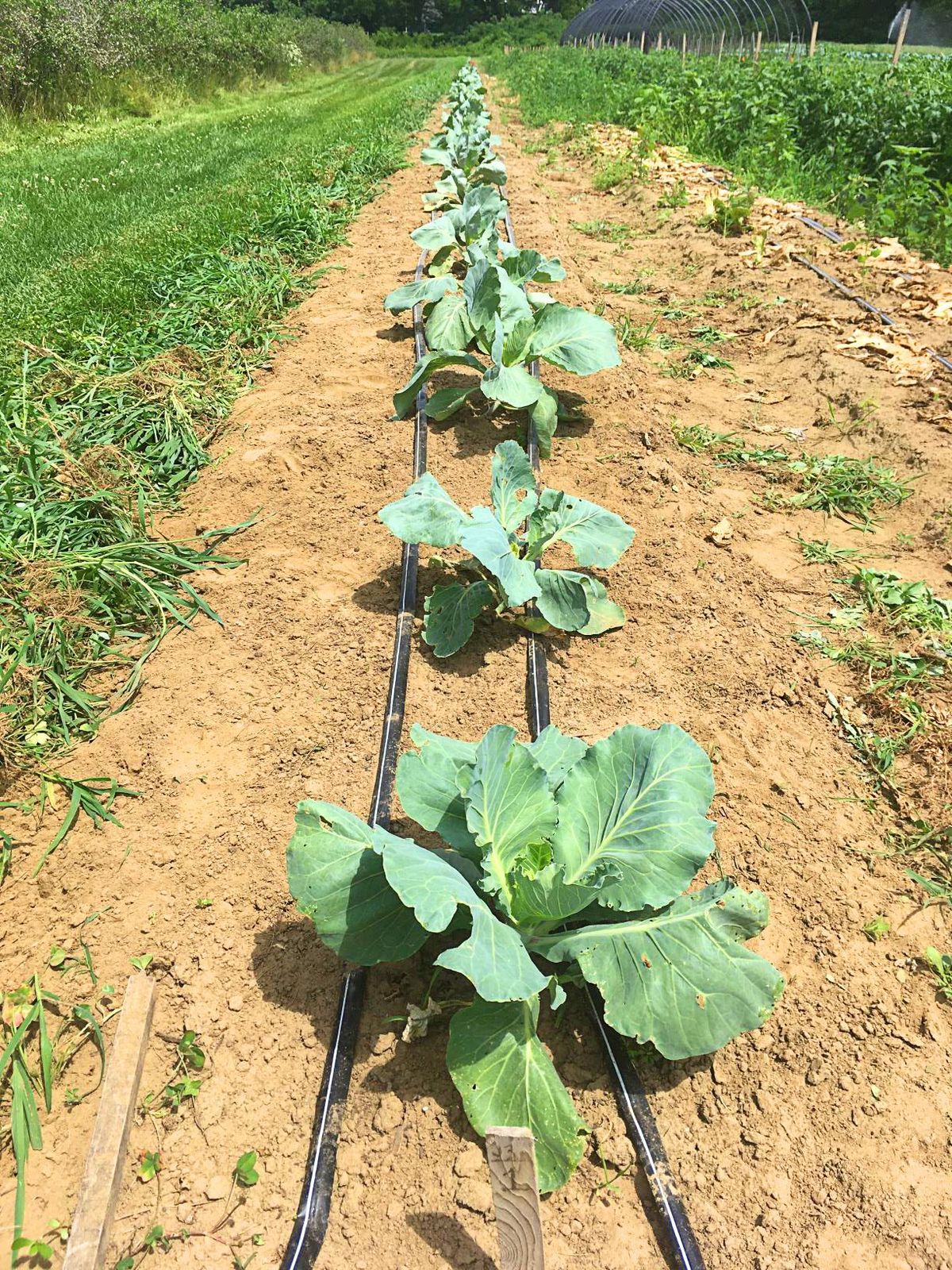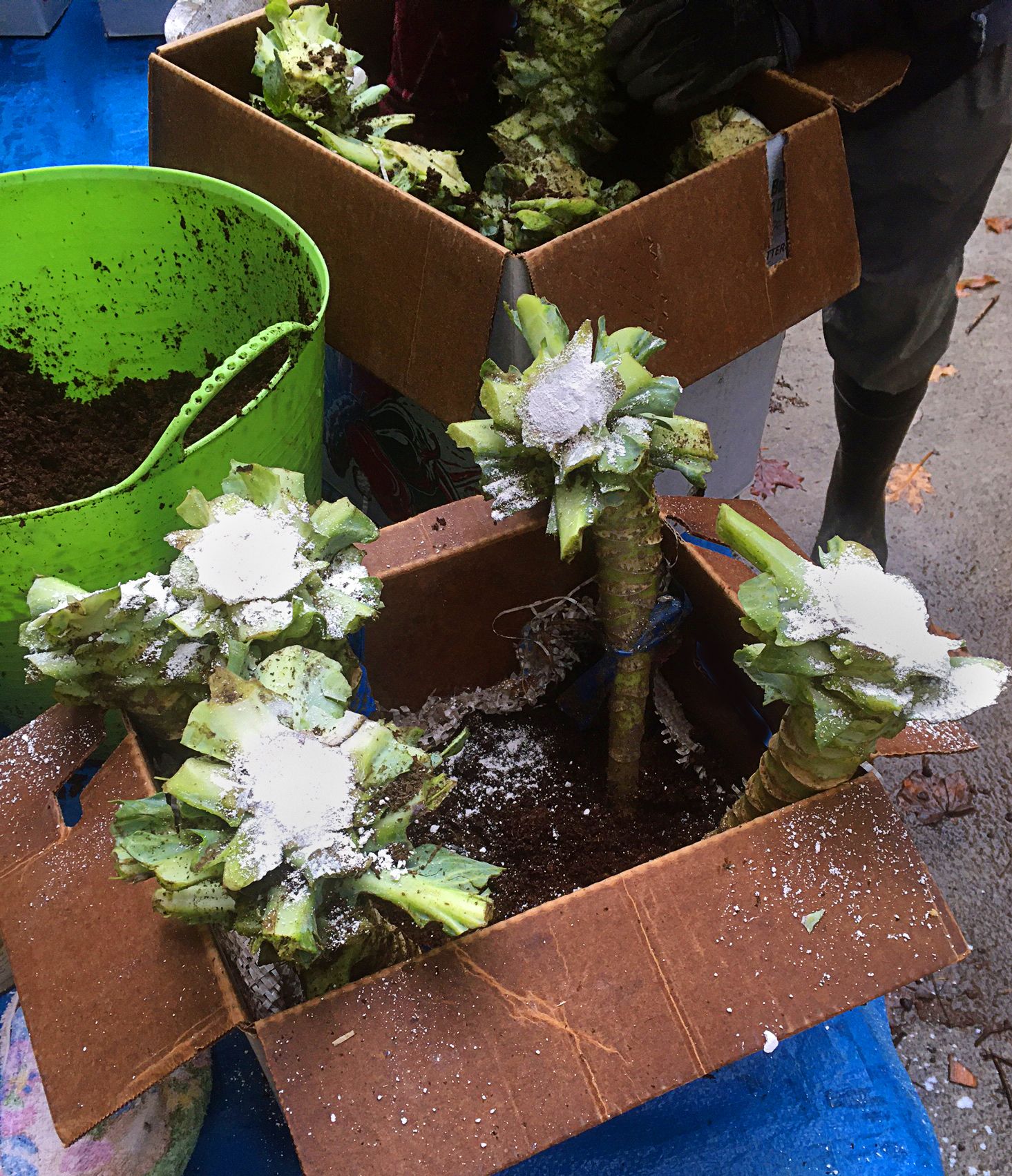Cedar Circle teams up with local seed-savers to restore rare cabbage
The alarming loss of diversity in vegetables and other crops is prompting gardeners to start saving their own seeds, especially of rarer heirloom varieties.

Years ago we discovered a pepper that we really loved. It was thick and meaty, crunchy and tasty and it matured within Vermont’s short growing season. One February we went to order the seeds and it was gone, no longer available in any seed catalog. I’m sure other gardeners have had similar experiences.
We are in fact experiencing a devastating loss of biodiversity in vegetable and crop seeds. A hundred years ago every farmer saved seeds and exchanged seeds with neighboring farmers. Each region developed its own unique crop varieties. People saved the seeds from the most tasty vegetables that grew best in their local conditions. In 1903 there were, according to the National Center for Genetic Resources Preservation, 288 beet varieties, 544 cabbage varieties, 307 sweet corn varieties, 478 lettuce varieties, 338 muskmelon varieties, 408 pea varieties, 463 radish varieties, 341 squash varieties, 408 tomato varieties, and 285 cucumber varieties. By 1983, of that list there remained 17 beets, 28 cabbages, 12 sweet corn, 36 lettuces, 27 muskmelons, 25 peas, 27 radishes, 40 squashes, 79 tomatoes and 16 cucumbers. Overall, that represents a loss of 93% of that vegetable diversity.
The centralization of seed production into fewer and fewer providers has played a huge role in the loss of diversity. There used to be hundreds of small seed companies in addition to seed-saving farmers. But as agriculture became industrialized, starting in the 1950s and intensifying in the 1960s and ’70s, production methods became more and more streamlined. Along the way farmers lost their autonomy and became part of a production chain. The seed industry today is dominated by a very few corporations. They bought up the small seed companies or outcompeted them. The big three in the US, Monsanto, Syngenta and DuPont are all transnational corporations. They produce more than half the seeds that are sold on the commercial market. As a result the diversity among seeds has dwindled to those varieties that best serve corporate interests. (Monsanto was recently purchased by Bayer Corporation, which along with Syngenta is a major producer of pesticides including neonicotenoids implicated in the decline of bees.)
One desire on the part of corporations was to bring about a dependence on commercial seeds and deter the self-reliant habit of seed-saving. They achieved this end through the marketing of hybrid seeds that promised yields of up to 30% more than traditionally bred varieties. This enticement was hard for farmers to resist in an increasingly competitive agricultural climate. But the catch is, hybrids don’t breed true, so if a farmer saves seeds from hybrid plants, the next generation will be a mixed bag of mongrels that are less productive. Vegetable seed catalogs for home gardeners have also become dominated by hybrid varieties.
Why does the loss of vegetable and crop diversity matter? Different varieties of the same plant have different genetic makeups. Some may carry genes that make them more drought resistant. Others may carry genes that confer resistance to particular diseases, or that allow them to mature earlier. Those genes may not be apparent unless drought, or that disease, manifests itself. Loss of diversity means there is nothing to fall back on when calamity strikes. In the Irish potato famine for example, only one variety was planted and it was genetically susceptible to a fungal disease known as late blight. The results were tragic.
This alarming loss of diversity in vegetables and other crops is prompting gardeners to start saving their own seeds, especially of rarer heirloom varieties. But the devil’s in the details, and success depends on knowing how particular vegetables reproduce.
Some plants, including beans and tomatoes, conveniently fertilize themselves, often before the flower even opens. Thus they are essentially inbred lines that, surprisingly, retain their vigor. Insects carry out a small amount of cross-pollination - the transfer of pollen from another plant, but it is not essential for producing viable bean or tomato seeds. At the other extreme, some vegetables demand cross pollination to make seed. They are self-sterile, meaning an individual plant cannot make seed using its own pollen. Examples are cabbage and radish. In between are vegetables that can make seed using either the same plant’s pollen or from cross-pollination.
Population size is critical in vegetables that require cross-pollination. Making seeds from two or three plants limits the genetic diversity of the resulting seeds. After a few rounds of reproduction the malaise known as inbreeding depression sets in. The population loses vigor and dies out. For seed-saving with cross-pollinating vegetables, a minimum of 20 plants may be enough to keep the line vigorous and robust for home gardeners. However in the case of cabbage, a much higher number is needed, at least 50-100 plants.
And there is a further catch - the life cycle of the plant. Many vegetables are annuals. They grow, make seed and die in the same year. But some are biennials, they grow the first year, then overwinter and make seed the second year. Cabbages and carrots are examples. Saving seeds from these plants means keeping them dormant but protected from freezing over the winter, and then growing them out in the second year.
A cabbage seed-saving project is currently underway at Cedar Circle Farm in East Thetford, in a collaboration with Upper Valley Seed-Savers. This group of dedicated gardeners and farmers envisions that regaining local control of seed production through seed-saving will be key to long-term regional food security. Saving locally-adapted varieties that are not the purview of corporations is an important goal. Thus a rare heirloom cabbage variety named Marner that grows well here was chosen for the project. Cedar Circle generously offered some of their land to host the growing of 100 or so cabbages in 2020. In the fall of 2020 the cabbage heads were cut off and donated to Willing Hands for distribution to local food shelves. The cabbage stems, or trunks, possess dormant side buds that will flower in 2021. The trunks were dusted with kaolin to prevent rotting of the cut surface and they spent the winter in a Thetford root cellar, with their roots in moist peat moss. After frost danger is past in early May they will be planted out. With any luck they will produce tall, unruly flower stems that will need to be staked, followed by oodles of genetically robust seeds.

